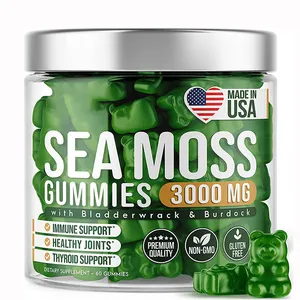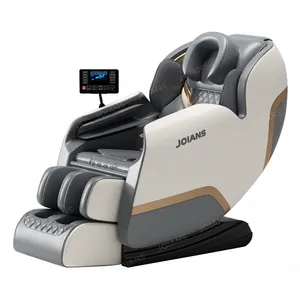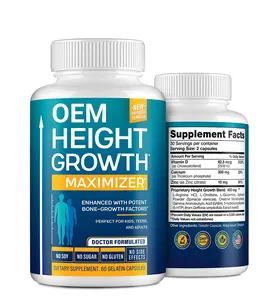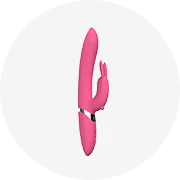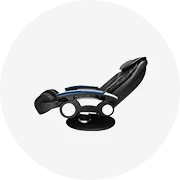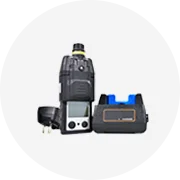Phổ biến trong ngành của bạn

Biểu Tượng Tùy Chỉnh Tái Sử Dụng Mờ Silicone Núm Vú Bìa Có Thể Giặt Vô Hình Pasties Mỏng Tự Dính Núm Vú Bìa Cho Phụ Nữ
0,45 US$ - 0,59 US$
Đơn hàng tối thiểu: 50 Cái
Vận chuyển mỗi chiếc: 1,02 US$


Núm Vú Cơ Khí 3/4 Khớp Nối Gi Ống Lắp Mạ Kẽm Đúc Dễ Uốn Sắt Phụ Kiện Núm Vú
0,10 US$ - 0,80 US$
Đơn hàng tối thiểu: 2 Cái


Thép không gỉ 304 Bên ngoài dây jointexternal chủ đề trực tiếp đầu pipefittings núm vú ống nước materialsnexouowtonui
0,30 US$ - 0,50 US$
Đơn hàng tối thiểu: 100 Cái


Thép không gỉ 304 Bên ngoài dây Doanh bên ngoài chủ đề trực tiếp đầu phụ kiện đường ống núm vú hệ thống ống nước Vật liệu Hex cắm với NUT
2,55 US$
Đơn hàng tối thiểu: 10 Cái
Vận chuyển mỗi chiếc: 17,92 US$


SS304 316 ren núm vú phụ kiện đường ống thép dài hoặc ngắn ống núm vú đầu núm vú
0,40 US$ - 0,49 US$
Đơn hàng tối thiểu: 50 Cái
Vận chuyển mỗi chiếc: 0,25 US$


Thép không gỉ 201 304 316 chủ đề núm vú ngắn Hex thủy lực BSP NPT hệ thống ống nước Vít Hex núm vú
0,40 US$
Đơn hàng tối thiểu: 10 Cái

Núm Vú Ống Thép Cacbon BSP NPT Núm Ống Sắt Đen Ngắn Ngắn Bằng Thép Mạ Kẽm Cho Nam
999,00 US$
Đơn hàng tối thiểu: 1 Tấn

Thép Carbon Thủy Lực Dài Núm Vú BSP NPT Nam Chủ Đề Thép Mạ Kẽm Dài Hoặc Ngắn Ống Núm Vú
0,45 US$
Đơn hàng tối thiểu: 200 Cái

Cung cấp núm vú thép đen ngắn/dài hình ống thép carbon (SGP) tương đương với số tiêu chuẩn JIS g3452
0,33 US$ - 11,80 US$
Đơn hàng tối thiểu: 1000 Cái

Đầu Nối Ống Ren NPT Bằng Thép Cacbon Đầu Nối Ống Mạ Kẽm CS ASTM/ASME/ANSI Dài Hoặc Ngắn Màu Đen Cho Nam
12,00 US$
Đơn hàng tối thiểu: 1 Cái

Ống Nối Bằng Sắt Mạ Kẽm Dài Ống Nối Hình Vuông Núm Vú Bằng Gang Đúc
0,50 US$ - 0,60 US$
Đơn hàng tối thiểu: 3000 Cái

Dài và ngắn núm vú NPT BSP DIN mạ kẽm ống thép carbon Thùng núm vú ren ống núm vú
0,10 US$ - 0,50 US$
Đơn hàng tối thiểu: 100 Cái
Vận chuyển mỗi chiếc: 9,71 US$

KF/nw phụ kiện mặt bích dài ngắn hàn sơ khai mặt bích nửa núm vú cho thép không gỉ bán dẫn
5,00 US$
Đơn hàng tối thiểu: 50 Cái

New SCH40 Đẹp Din Tiêu Chuẩn Dài Núm Vú Ngắn Từ Trung Quốc
1,00 US$ - 2,00 US$
Đơn hàng tối thiểu: 10 Cái

Thủy lực Thùng núm vú BSP NPT nam chủ đề thép mạ kẽm dài hoặc ngắn ống núm vú 1"
0,50 US$ - 1,00 US$
Đơn hàng tối thiểu: 100 Cái
Vận chuyển mỗi chiếc: 0,81 US$

Sch40/sch80/STD/XXS NPT ren thép liền mạch dài/ngắn ống/thùng núm vú
1,01 US$ - 1,10 US$
Đơn hàng tối thiểu: 5 Cái

Thép Carbon Thủy Lực Dài Núm Vú BSP NPT Nam Chủ Đề Thép Mạ Kẽm Dài Hoặc Ngắn Ống Núm Vú
Sẵn sàng vận chuyển
0,05 US$ - 9,50 US$
Đơn hàng tối thiểu: 100 Cái
Vận chuyển mỗi chiếc: 200,25 US$

Vật Liệu Thép Carbon Ngành Công Nghiệp Kc Ngắn Ống Doanh Kẽm Ống Núm Vú
1,60 US$ - 2,60 US$
Đơn hàng tối thiểu: 5000 Cái
Vận chuyển mỗi chiếc: 11,30 US$

Chữa Cháy SCH 40 nam chủ đề BSP NPT thủy lực dài ngắn carbon đen thép mạ kẽm Ống núm vú Thùng núm vú
0,23 US$ - 0,28 US$
Đơn hàng tối thiểu: 50 Cái
Vận chuyển mỗi chiếc: 1,03 US$

Thép carbon đen ống mạ kẽm dài ống núm vú ngắn ống núm vú
0,27 US$ - 0,32 US$
Đơn hàng tối thiểu: 1 Cái
Vận chuyển mỗi chiếc: 4,70 US$


Giá Rẻ Giá núm vú và núm vú ngắn vít đôi ống thép không gỉ thẳng bùng phụ kiện chuyển tiếp khớp Ống Adapter
0,80 US$ - 2,00 US$
Đơn hàng tối thiểu: 500 Cái
Vận chuyển mỗi chiếc: 1,61 US$

Thép carbon mạ kẽm Ống dài ống núm vú ngắn ống núm vú
0,40 US$ - 0,50 US$
Đơn hàng tối thiểu: 10 Cái
Vận chuyển mỗi chiếc: 3,31 US$

Thép không gỉ ngắn áp lực cao phù hợp mỡ Ống núm vú
3,28 US$ - 5,23 US$
Đơn hàng tối thiểu: 1000 Cái
Vận chuyển mỗi chiếc: 3,62 US$

Nam Chủ Đề Thép Không Gỉ SW Phụ Kiện NPT Phụ Kiện Hex Núm Vú Ren Ngắn Ống
Sẵn sàng vận chuyển
15,20 US$ - 16,00 US$
Đơn hàng tối thiểu: 10 Cái
Vận chuyển mỗi chiếc: 4,15 US$

Núm vú Thùng BSP NPT nam chủ đề thép không gỉ ngắn ống núm vú 201 304 316
3,22 US$
Đơn hàng tối thiểu: 500 Cái
Vận chuyển mỗi chiếc: 0,25 US$

Thép không gỉ Thùng núm vú nam tất cả các chủ đề núm vú dài hoặc ngắn NPT chủ đề mạ kẽm Ống núm vú
Sẵn sàng vận chuyển
0,13 US$ - 0,15 US$
Đơn hàng tối thiểu: 500 Cái
Vận chuyển mỗi chiếc: 35,75 US$

Nhà Máy Trung Quốc Nhà Sản Xuất OEM IS-KF Thép Không Gỉ Ngắn Hàn Ngắn Ống Thép Carbon Ống Núm Vú Cho Nhiên Liệu Dầu
0,80 US$ - 1,00 US$
Đơn hàng tối thiểu: 100 Cái
Vận chuyển mỗi chiếc: 9,25 US$

Chân không mặt bích DN phụ kiện kf16 kf25 kf40 kf50 nửa núm vú ngắn dài với chiều dài tùy chỉnh
Sẵn sàng vận chuyển
1,60 US$
Đơn hàng tối thiểu: 10 Cái
Vận chuyển mỗi chiếc: 4,74 US$

Thép Carbon Mạ Kẽm Nóng Dài Và Ngắn Bs1387 Bs Chủ Đề Sch40 Núm Vú
0,10 US$ - 0,30 US$
Đơn hàng tối thiểu: 1000 Cái
Vận chuyển mỗi chiếc: 0,00 US$

WZ thủy lực Thùng núm vú BSP NPT nam chủ đề thép không gỉ dài hoặc ngắn ống núm vú 201 304 316
0,60 US$ - 1,00 US$
Đơn hàng tối thiểu: 10 Cái


Oem phụ kiện đường ống núm vú SS304 thép carbon bán kính ngắn khuỷu tay con trai 3/4 khuỷu tay với giá tốt nhất
3,50 US$ - 9,40 US$
Đơn hàng tối thiểu: 100 Cái

Các Bộ Phận Lắp Ráp Máy Bơm Chân Không Đầu Nối Hàn Dài Nửa Núm Vú
Sẵn sàng vận chuyển
2,20 US$ - 9,60 US$
Đơn hàng tối thiểu: 100 Cái
Vận chuyển mỗi chiếc: 0,19 US$

Ống Nước Lắp Ống Giảm Tốc Tee Ống Hàn Ống Thép Đúc Natual Đen Bsp/Npt Barrel Núm Vú
5,00 US$
Đơn hàng tối thiểu: 100 Cái

Ống Chân Không Phụ Kiện Thép Không Gỉ KF25 Với 1 "OD Ống Nửa Full Núm Vú Dài Hoặc Ngắn Hàn Stub
1,91 US$ - 2,09 US$
Đơn hàng tối thiểu: 10 Cái

Mặt Bích Hàn Núm Dài 30Mm KF40, Thép Không Gỉ, Đầu Hàn Ngắn NW40 30
3,00 US$ - 4,00 US$
Đơn hàng tối thiểu: 10 Cái
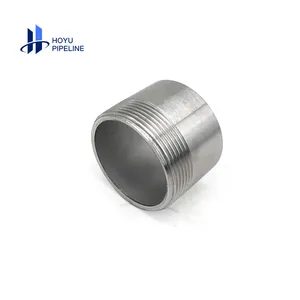
Phụ Kiện Ống Có Ren Bằng Thép Không Gỉ Phụ Kiện Ống Khuỷu Hàn Bằng Thép Không Gỉ 304 Phụ Kiện Ống Không Đường Nối Núm Vú
1,50 US$ - 2,00 US$
Đơn hàng tối thiểu: 10 Cái

Thép liền mạch Nữ Nam Threaded Hàn Phụ Kiện Toe Poe Ống Núm Vú
15,00 US$ - 18,00 US$
Đơn hàng tối thiểu: 500 Cái

Các danh mục hàng đầu
Giới thiệu về núm vú ngắn
Ngày nay, núm vú ngắn không còn là điều mới mẻ đối với những người bình thường và không còn bị coi là điều cấm kỵ khi sử dụng. Nếu bạn đang tìm kiếm niềm vui áp chót đó, bạn phải kiểm tra sự bao la. Bộ sưu tập núm vú ngắn tại Alibaba.com. Những gợi cảm và cong. núm vú ngắn đáng giá từng xu và chắc chắn làm cho đêm đó trở nên đặc biệt đối với bạn. Những con búp bê này có ngoại hình giống như thật, bắt đầu từ tóc đến ngón chân theo mọi nghĩa.
Cho dù bạn là một người cô đơn đang tìm kiếm một người bạn đời như cuộc sống hay một cặp vợ chồng muốn thêm gia vị cho cuộc sống của họ, bạn đều có thể sử dụng chúng . núm vú ngắn để đốt cháy ngọn lửa đó. Những ngoạn mục. núm vú ngắn có thể tùy chỉnh theo mong đợi của bạn. Những điều tuyệt vời. núm vú ngắn có sẵn ở cả phiên bản dành cho nam và nữ và được làm từ silicone cấp y tế để sử dụng an toàn. Hãy sở hữu ngay bây giờ và tận hưởng một đêm đam mê và cháy bỏng.
Alibaba.com cung cấp những điều tuyệt vời này. núm vú ngắn ở mọi hình dạng cơ thể, kích thước và sắc tộc. Dù yêu cầu của bạn đối với. núm vú ngắn, bạn có thể tải tất cả chúng trên trang web. Những cái này. núm vú ngắn được tạo hình bởi những người thợ thủ công giỏi nhất và mọi chi tiết phức tạp đều được kiểm tra kỹ lưỡng. Những con búp bê này có mắt, tóc, móng tay và tất cả các bộ phận cơ thể khác tương tự như người thật.
Alibaba.com cung cấp nhiều loại. núm vú ngắn có thể giúp bạn mua các sản phẩm phù hợp với ngân sách và các yêu cầu khác của bạn. Các sản phẩm này an toàn để sử dụng, được chứng nhận và thân thiện với môi trường trong tự nhiên. Đơn đặt hàng OEM có sẵn trên các sản phẩm này.
Cho dù bạn là một người cô đơn đang tìm kiếm một người bạn đời như cuộc sống hay một cặp vợ chồng muốn thêm gia vị cho cuộc sống của họ, bạn đều có thể sử dụng chúng . núm vú ngắn để đốt cháy ngọn lửa đó. Những ngoạn mục. núm vú ngắn có thể tùy chỉnh theo mong đợi của bạn. Những điều tuyệt vời. núm vú ngắn có sẵn ở cả phiên bản dành cho nam và nữ và được làm từ silicone cấp y tế để sử dụng an toàn. Hãy sở hữu ngay bây giờ và tận hưởng một đêm đam mê và cháy bỏng.
Alibaba.com cung cấp những điều tuyệt vời này. núm vú ngắn ở mọi hình dạng cơ thể, kích thước và sắc tộc. Dù yêu cầu của bạn đối với. núm vú ngắn, bạn có thể tải tất cả chúng trên trang web. Những cái này. núm vú ngắn được tạo hình bởi những người thợ thủ công giỏi nhất và mọi chi tiết phức tạp đều được kiểm tra kỹ lưỡng. Những con búp bê này có mắt, tóc, móng tay và tất cả các bộ phận cơ thể khác tương tự như người thật.
Alibaba.com cung cấp nhiều loại. núm vú ngắn có thể giúp bạn mua các sản phẩm phù hợp với ngân sách và các yêu cầu khác của bạn. Các sản phẩm này an toàn để sử dụng, được chứng nhận và thân thiện với môi trường trong tự nhiên. Đơn đặt hàng OEM có sẵn trên các sản phẩm này.
